Are you wondering whether ivy has invasive roots? This is a common question among gardeners who want to know how to control this popular plant.
The answer is not a simple yes or no, as it depends on the specific type of ivy and its growing conditions.
Understanding the root system of ivy is essential to control its growth and prevent any potential damage.
Types of Ivy
Ivy is a climbing plant that can grow up to 100 feet long. It has glossy, green leaves that can be either lobed or unlobed, depending on the species. Ivy can be deciduous or evergreen, producing small, greenish-yellow flowers in the fall.
English ivy (Hedera helix)
This is the most common type of ivy, known for its ability to grow in various conditions. But it's also considered invasive in many regions, especially in the United States.
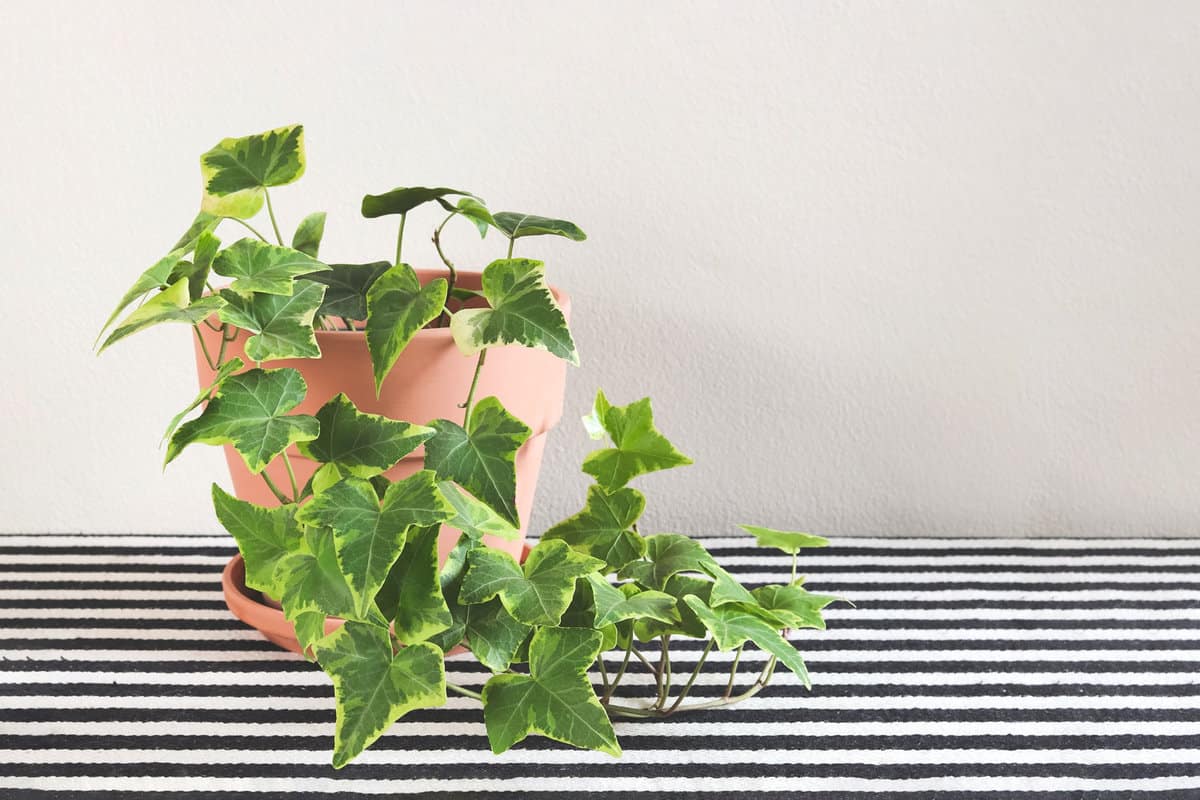
English ivy tends to climb, covering walls, trees, and the ground, which can suffocate and damage the structures and plants it grows over.
Japanese ivy (Hedera rhombea)
Japanese ivy is another variety of ivy, but it is generally considered less invasive than English ivy.
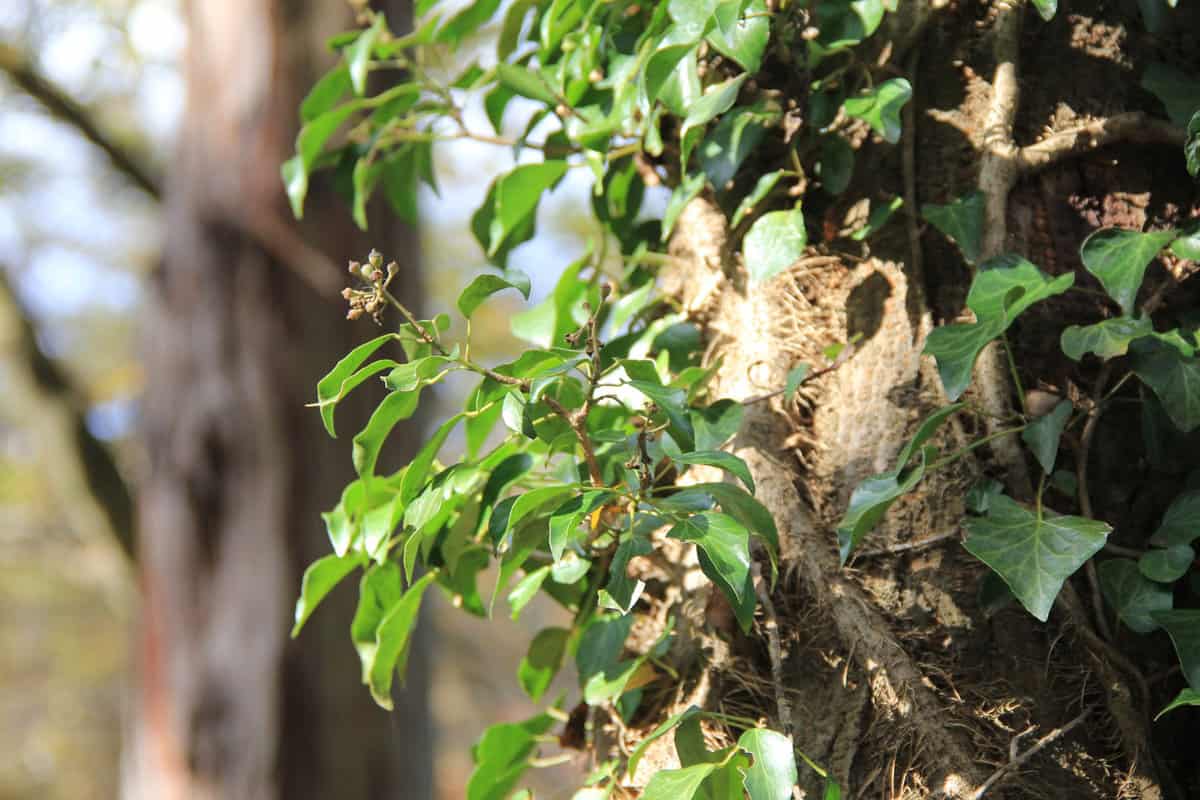
Its leaves are unlobed, giving it a distinct appearance, and it's often used as a ground cover in landscaping.
It's essential to carefully consider the characteristics and potential invasiveness of the ivy species you're considering before planting it in your garden.
Canary Island Ivy (Hedera canariensis)
This ivy has large, glossy, dark green leaves. It's often appreciated for its aesthetic appeal and its ability to provide dense coverage.
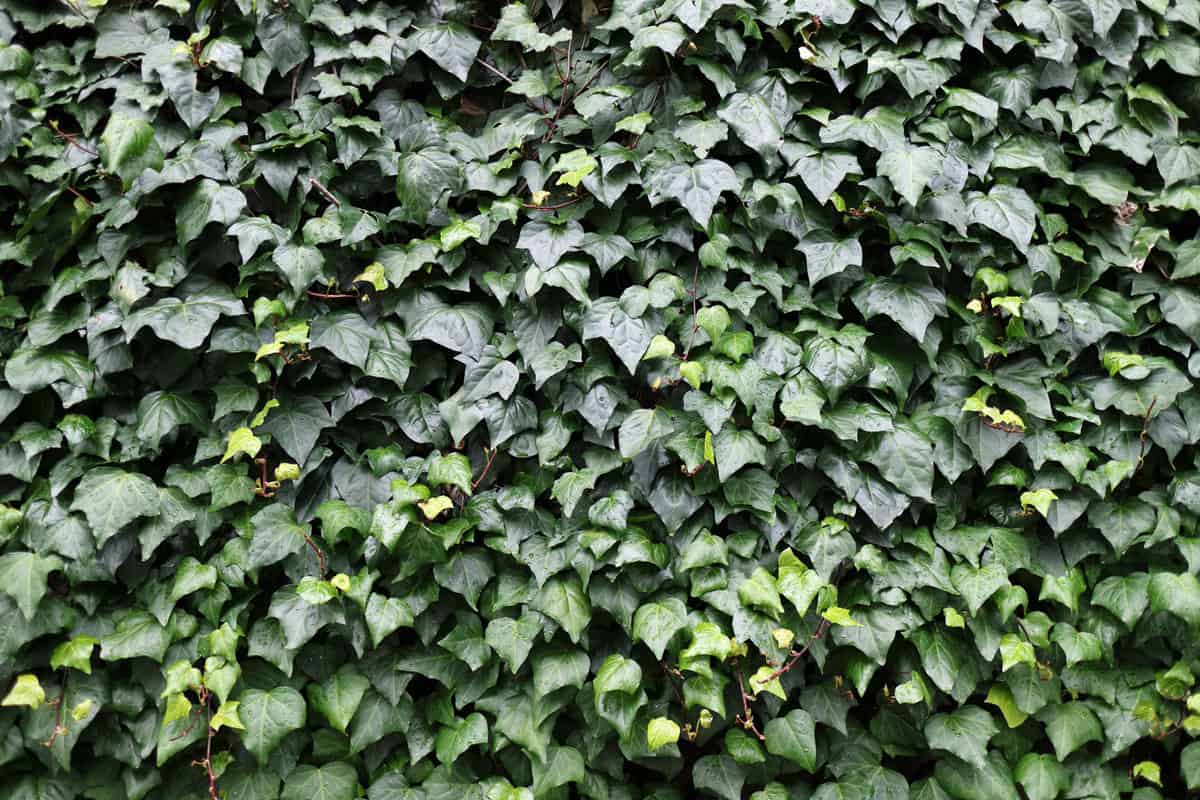
Canary Island Ivy can be invasive in certain areas, especially in mild climates where it can grow year-round without the restriction of frost. In places like California, it has been reported as invasive because of its rapid spread, which can overwhelm other plants.
Irish Ivy (Hedera hibernica)
Irish ivy is very similar in appearance to English ivy. It has dark green, glossy leaves and can be hard to distinguish from its English counterpart.
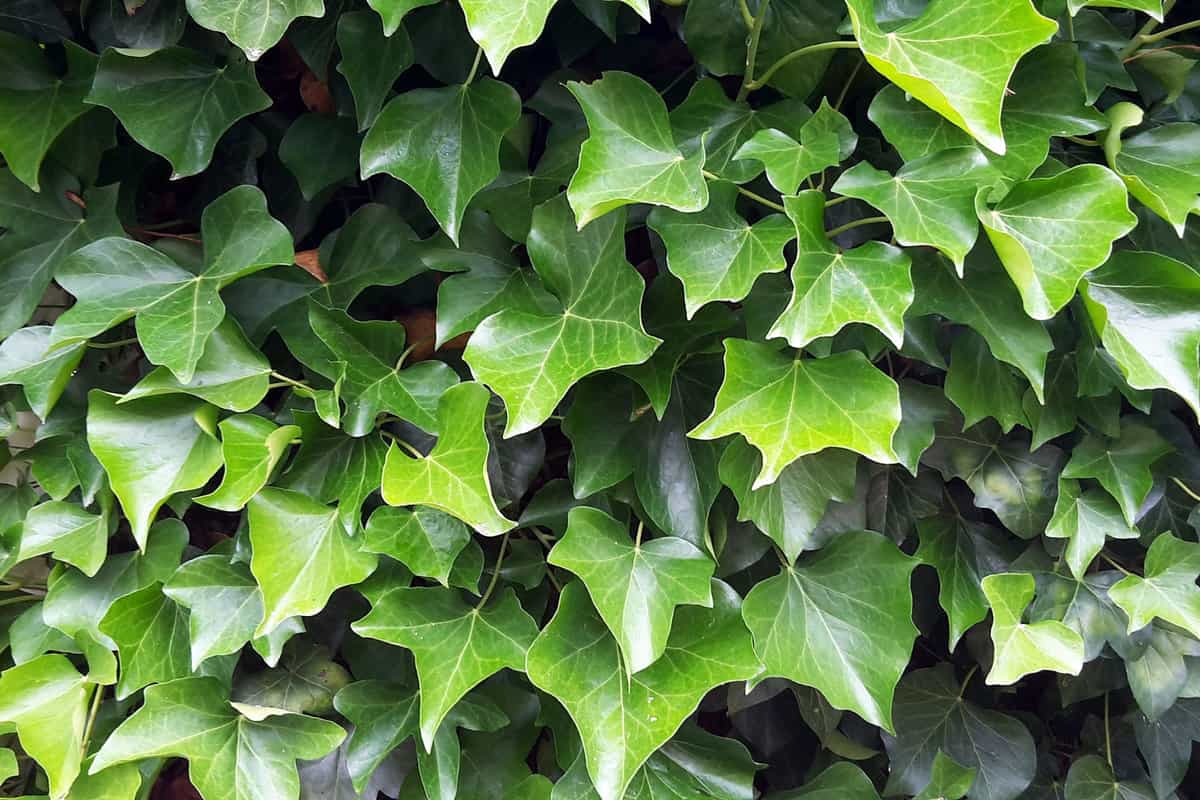
Irish ivy can be invasive, especially in areas with climates similar to its native habitat (like the Pacific Northwest in the U.S.). Its growth habit and impacts are identical to English ivy, making it a concern in certain areas.
The invasiveness of ivy varies greatly depending on the specific species, so it's essential to research to make informed decisions.
Root System of Ivy
If you are wondering whether ivy has invasive roots, it's essential to understand the root system of this plant. Here's what you need to know:
Ivy Root Structure
Ivy roots are known for their strength and tenacity. Their fibrous structure helps them cling tightly to walls, trees, and other surfaces. These roots can also penetrate deep into the ground, allowing the plant to absorb water and nutrients from the soil.
One exciting feature of ivy roots is that they can also grow aerial roots, which help the plant climb up walls and other vertical surfaces. These small and adhesive roots allow them to grip onto surfaces and support the plant.
Growth Pattern of Ivy Roots
One of the most distinguishing characteristics of ivy is its formidable root system. These roots have earned a reputation in the gardening world for their aggressive and persistent growth patterns.
Aggressive Spread
Ivy roots don't just grow; they seem to conquer. This aggressive spread can be advantageous if you're aiming for quick coverage, but it's a double-edged sword.
As these roots expand, they often out-compete other plants for nutrients, sunlight, and space. In gardens, this can lead to ivy overshadowing and choking out other plants, making it difficult for diverse flora to thrive.
Persistent Nature
Persistence is another hallmark of ivy roots. Even when parts of the ivy plant are removed, its origins can continue to grow and potentially resprout.
This makes removing ivy particularly challenging. It's not just about cutting the plant back; the roots must be thoroughly addressed to prevent a resurgence.
Potential Damage to Structures
The power of ivy roots should not be underestimated, especially concerning buildings and other structures. As they spread, ivy roots can find their way into cracks, crevices, and weaknesses in walls and foundations.
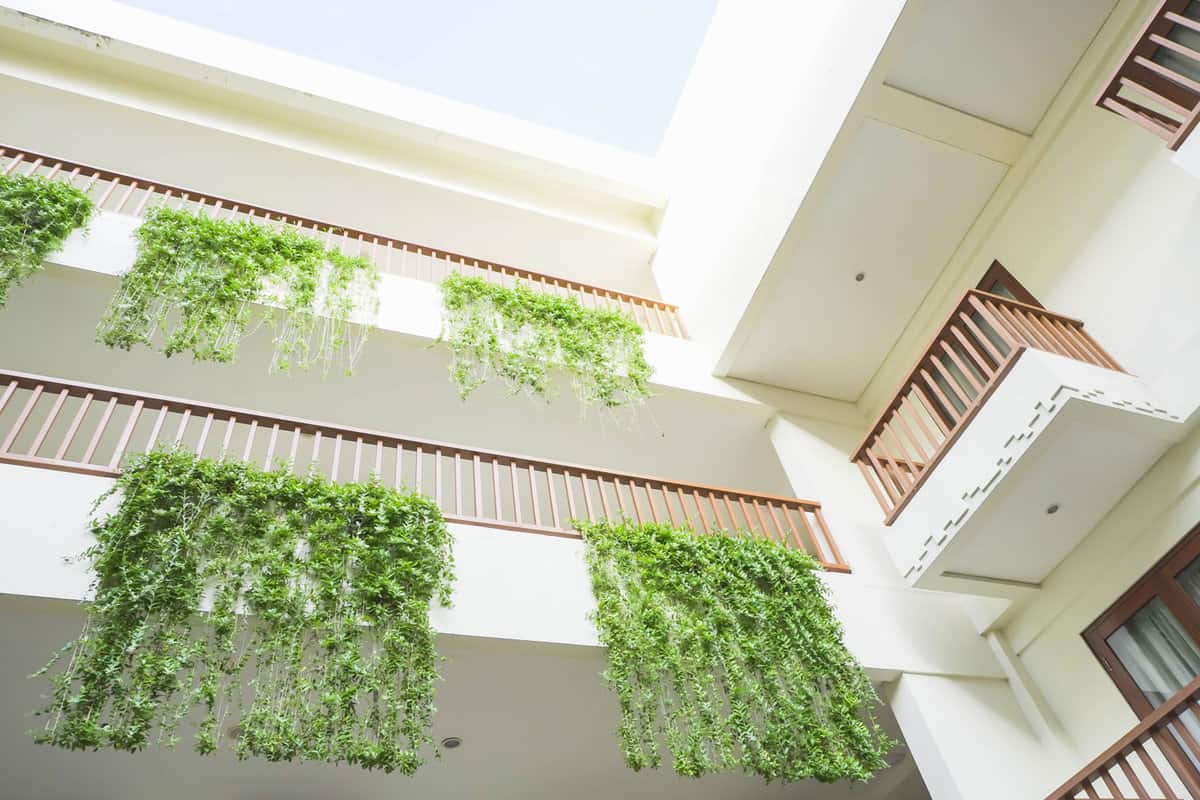
Over time, they can exacerbate these vulnerabilities, leading to more significant damage. This invasive nature isn't just limited to built structures; trees and natural formations can also be affected.
Managing Ivy Growth
Prevention Measures
Preventing ivy from spreading is the best way to manage its growth. Here are some prevention measures you can take:
- Plant ivy in containers: If you want to grow ivy, consider planting it in containers instead of in the ground. This will prevent the roots from spreading and taking over the area.
- Choose non-invasive ivy species: Some ivy species are less invasive than others. When choosing ivy for your garden, look for non-invasive species such as Japanese.
- Regularly prune ivy: Regular pruning can help keep ivy growth under control. Prune back any new growth as soon as you notice it to prevent it from spreading.
Control Techniques
If you already have ivy growing on your property, there are several control techniques you can use to manage its growth:
- Manual removal: One of the most effective ways to control ivy growth is to remove it manually. Use a pair of pruning shears to cut the ivy stems at the base and pull the roots out. Wear gloves to protect your hands from the ivy's oils.
- Chemical control: If manual removal is not an option, you can use herbicides to control ivy growth. Look for herbicides designed explicitly for ivy, and follow the instructions carefully.
- Smothering: Another way to control ivy growth is to smother it. Cover the ivy with a tarp or heavy-duty plastic, and leave it in place for several weeks. This will prevent the ivy from getting sunlight and eventually kill it.
Final Words
If you are considering planting ivy in your garden, choosing a non-invasive variety and monitoring its growth regularly is essential.
When you are dealing with stubborn ivy roots, don't worry; there are several methods you can try to remove them.
Always wear protective gear when handling ivy, as it can cause skin irritation in some people.
With proper care and management, ivy can be a beautiful addition to your garden without causing any harm!
Related posts you don't want to miss:
